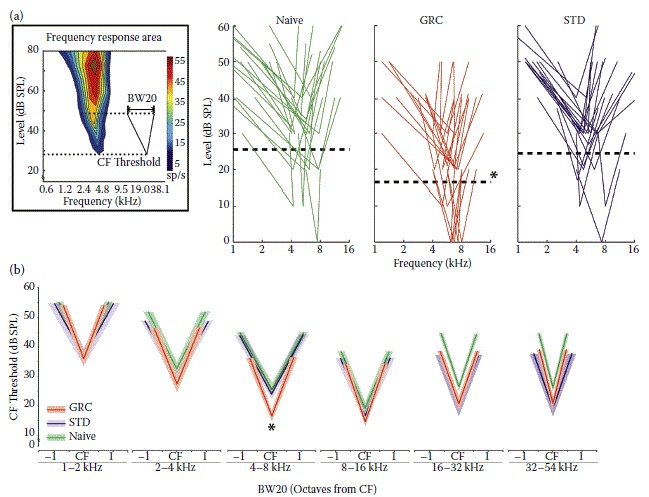
NCBI Bookshelf. A service of the National Library of Medicine, National Institutes of Health.

(See Color Insert) Tone-onset-to-error learning strategy results in reduced threshold and bandwidth in A1. Frequency response areas (FRA) were constructed for each recording site in A1 to determine threshold and bandwidth across A1 tonotopy (inset). (a) Individual threshold and bandwidth 20 dB SPL above threshold (BW20) at the characteristic frequency (CF) of the cortical site is represented by a “V” shape. Dashed lines show group mean CF threshold of the A1 population tuned within ± 0.5 octaves of the 5.0 kHz signal frequency. Only the GRC group using the TOTE strategy develops frequency-specific increases in neural sensitivity and selectivity. (b) Representational plasticity in threshold and BW20 is evident in the GRC group as the changes are specific only to A1 sites tuned near the signal frequency. Solid lines show group means with shaded areas showing ± standard error. Asterisks mark significant differences from a naive and STD group means. (Reprinted from Neurobiology of Learning and Memory, 89, Berlau, K.M., and Weinberger, N.M., Learning strategy determines auditory cortical plasticity, 153–66, 2008, with permission from Elsevier.)

NCBI Bookshelf. A service of the National Library of Medicine, National Institutes of Health.